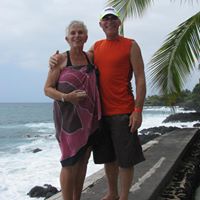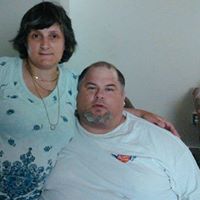Ryan Scott Howell
age ~44
from Carlsbad, CA
- Also known as:
-
- Ryan S Howell
- Ryan S Owell
Ryan Howell Phones & Addresses
- Carlsbad, CA
- Hendersonville, NC
- Oceanside, CA
- Encinitas, CA
- La Habra, CA
- Spanaway, WA
- Spring Lake, NC
- Archbold, OH
- San Clemente, CA
- Ocean Shores, WA
Work
-
Company:Nordstrom rackApr 2013
-
Position:Customer service representative
Education
-
School / High School:Mission Hills High School- San Marcos, CA2003
Us Patents
-
Method For Determining A Characteristic Of An Actuator
view source -
US Patent:20180119626, May 3, 2018
-
Filed:Nov 3, 2016
-
Appl. No.:15/342567
-
Inventors:- Auburn Hills MI, US
Ryan Howell - Hendersonville NC, US -
International Classification:F02D 41/00
H02K 11/215
H02K 11/30
H02K 21/14
G01D 5/14 -
Abstract:A method, using multiple position sensors, for determining a characteristic of the actuator or a system, wherein the characteristic is causing or is indicative of the cause of the change in position of the actuator. One characteristic may be the lost motion of the actuator or system. Lost motion is the lag between the motion of a controlled device and that of an electrical drive device due to yielding or looseness. The lost motion of an actuator may increase as components wear and may eventually degrade the function or cause failure of the actuator and/or system.
-
Degressive Pneumatic Actuator Spring Rate
view source -
US Patent:20170234452, Aug 17, 2017
-
Filed:Feb 11, 2016
-
Appl. No.:15/041870
-
Inventors:- Auburn Hills MI, US
Ryan T. Howell - Hendersonville NC, US -
International Classification:F16K 31/122
F16K 31/163
F16K 1/20 -
Abstract:A valve actuator () and method for controlling such is disclosed. The valve actuator () may include a body (), a piston (), a first spring () displaceable between a primary position () and a secondary position (), and a second spring () displaceable between a first position () and a second position (). The first and second springs () are configured to be simultaneously displaced during movement of the piston () from a first piston position () to a second piston position (). The first spring () is configured to compress to a higher first spring force (F) during displacement from the primary position () to the secondary position (), and the second spring () is configured to have a decreasing second spring force (F) during displacement from the first position () to the second position (), the second spring force (F) decreasing non-linearly.
-
Pneumatic Actuator With Piston Having An Extended Lip
view source -
US Patent:20170051765, Feb 23, 2017
-
Filed:Feb 16, 2015
-
Appl. No.:15/119217
-
Inventors:- Auburn Hills MI, US
Ryan HOWELL - Hendersonville NC, US -
International Classification:F15B 15/10
F02B 37/18 -
Abstract:A pneumatic actuator () adapted for use with a turbocharger includes a diaphragm () having a valley (), and a piston () having a lip () extending from a flange (). A portion of the lip () curves or bends around the diaphragm () and possibly forms a double bend. The distal end () of the piston () is adapted to contact a majority of the valley () of the diaphragm () in its preloaded state. The distal end () may have a complementary shape with a shape of the valley (). The edge of the flange () is always spaced away from the diaphragm () to prevent contact of the edge with the diaphragm ().
-
Corrosion Resistant Pneumatic Actuator
view source -
US Patent:20160356208, Dec 8, 2016
-
Filed:Feb 5, 2015
-
Appl. No.:15/116560
-
Inventors:- Auburn Hills MI, US
Ryan HOWELL - Hendersonville NC, US -
Assignee:BORGWARNER INC. - Auburn Hills MI
-
International Classification:F02B 37/18
F04D 25/04
F15B 15/02
F01D 17/10
F01D 17/14
F01D 25/24
F04D 29/28
F01D 5/04 -
Abstract:A turbocharger () includes a wastegate valve () supported on the turbine housing (), and a pneumatic actuator () configured to actuate the wastegate valve (). The pneumatic actuator () includes a housing () separated into compartments () by a separating member (). The actuator () includes a piston () disposed in the housing () that defines at least a portion of the separating member (), a piston-biasing spring () disposed in the housing (), a first in let () that is in fluid communication with the first compartment (), the first inlet configured to be connected to a non-zero-pressure fluid source (), and a second inlet () that is in fluid communication with the second compartment (), the second inlet () configured to be connected to a non-zero-pressure fluid source ().
Resumes

Ryan Howell San Marcos, CA
view sourceWork:
Nordstrom Rack
Apr 2013 to Feb 2015
Customer Service Representative Nordstrom - Escondido
Oct 2012 to Apr 2013
Customer Service Representative LABCORP
Jul 2012 to Jul 2012
Externship Tire Tech
Feb 2011 to Feb 2011
Garage assistant
Apr 2013 to Feb 2015
Customer Service Representative Nordstrom - Escondido
Oct 2012 to Apr 2013
Customer Service Representative LABCORP
Jul 2012 to Jul 2012
Externship Tire Tech
Feb 2011 to Feb 2011
Garage assistant
Name / Title
Company / Classification
Phones & Addresses
Principal
Rubicon Law Group, Ltd.
Attorneys - Business Law/Corporation/Partnership
Attorneys - Business Law/Corporation/Partnership
1624 Market Street, Suite 202, Denver, CO 80202
3038009120
3038009120
Director
Turf Pro Property Maintenance Inc.
Lawn Care Companies. Bobcat Services. Sodding Companies. Landscape Maintenance Companies
Lawn Care Companies. Bobcat Services. Sodding Companies. Landscape Maintenance Companies
Private Address, Calgary, AB T3L 3B5
4032699179
4032699179
Director
Turf Pro Property Maintenance Inc
Lawn Care Companies · Bobcat Services · Sodding Companies · Landscape Maintenance Companies
Lawn Care Companies · Bobcat Services · Sodding Companies · Landscape Maintenance Companies
4032699179
B.O.D. INVESTMENT CORP

Ryan Howell Aler Buena
view source
Ryan Howell Andaya
view source
Ryan E. Howell
view source
James Ryan Howell
view source
Ryan Howell
view source
Ryan Howell
view source
Ryan Howell
view source
Ryan Howell
view sourceMyspace
Googleplus

Ryan Howell
Work:
Rick Howell Center for the Odd - Cafeteria Band Management. (68)
Education:
Cheeze School - Chutchut, Shawnee Mission East - Not doing anything.
Tagline:
Boi

Ryan Howell
Work:
Democracy Prep Public Schools
Education:
University of New Hampshire, Regent's College
Tagline:
Social networking skeptic.

Ryan Howell
Work:
Rise and Shine Letterpress and Design Studio - Co-Founder (2006)
Education:
Rowan University - Advertising / Public Relations

Ryan Howell
Work:
Heb - Cashier (2007)
Education:
Texas A&M University - BIMS
Tagline:
One Speed, Go!

Ryan Howell
Work:
Heidelberg - Receiving (2011)
Spaghetti warehouse (2008-2010)
Pig iron bbq (2010-2010)
Spaghetti warehouse (2008-2010)
Pig iron bbq (2010-2010)

Ryan Howell
Education:
Radford University - Computer Science, West Virginia University - Computer Science
Tagline:
NDO

Ryan Howell
Education:
University of Arizona - Archaeology, University of Oklahoma - Anthropology and Classics

Ryan Howell
Work:
Democracy Prep Public Schools - Design and Visualization Associate
Education:
University of New Hampshire
Flickr
Youtube
Classmates

Ryan Howell
view sourceSchools:
Sugar-Salem High School Sugar City ID 1981-1985
Community:
Joyce Reeves, James Hinton

Ryan Howell
view sourceSchools:
Anthony Wayne High School Whitehouse OH 1986-1990
Community:
Karol Gehrke

Ryan Howell
view sourceSchools:
St. Elmo High School St. Elmo IL 2000-2004
Community:
Bob Tucker, Sherry Hammer

Ryan Howell (Hashbrown)
view sourceSchools:
Thomas A. Edison Junior-Senior High School Lake Station IN 1977-1981
Community:
Timothy Martin, Trudi Cabrera

Ryan Howell
view sourceSchools:
Eastern High School Greentown IN 1997-2001
Community:
Joseph Adelman, Suzette Pittman, Gregory Eagle

Ryan Howell
view sourceSchools:
Fluvanna County High School Palmyra VA 1993-1997
Community:
Gerald Herndon, Ken Johnson

Ryan Howell
view sourceSchools:
Blue Mound High School Blue Mound IL 1990-1994
Community:
Jonathon Tish, Laura Smith, Debbie Tackett, Penny Poole, James Bos
News

One surprising way money can buy happiness, according to scientists
view source- Ryan Howell, a psychologist who was not involved with the study, called this consistency across demographics robust and impressive. Howells research at San Francisco State University also focuses on spending and happiness, and he also has foundthat the amount of money people have is not as imp
- Date: Jul 25, 2017
- Category: Health
- Source: Google
Plaxo

Ryan Howell
view sourceNashville, TNDirector, Product Management at Emdeon Past: Revenue Cycle Manager at Accretive Health, Hospital Information Services Manager at Ardent... • Fourteen years of healthcare industry experience (Revenue Cycle Consulting, Hospital Administration, Physician Practice Management, Information Systems... • Fourteen years of healthcare industry experience (Revenue Cycle Consulting, Hospital Administration, Physician Practice Management, Information Systems Deployment, & Managed Care Contracting)
• BS in Hospital Administration and working on final paper for Masters in Health Services...

Ryan Howell
view sourceGet Report for Ryan Scott Howell from Carlsbad, CA, age ~44
















